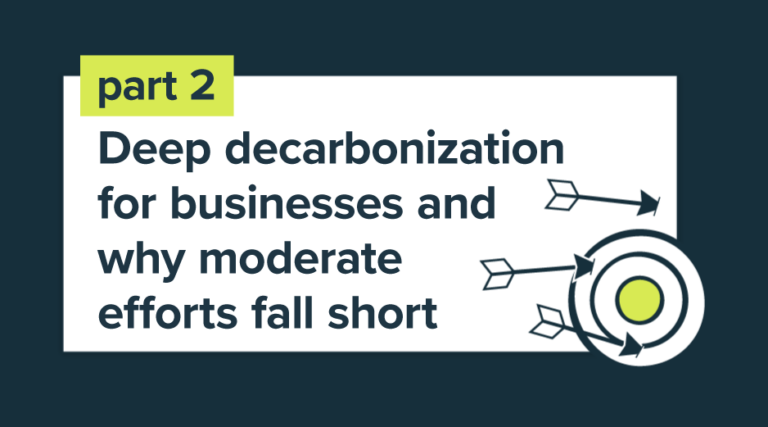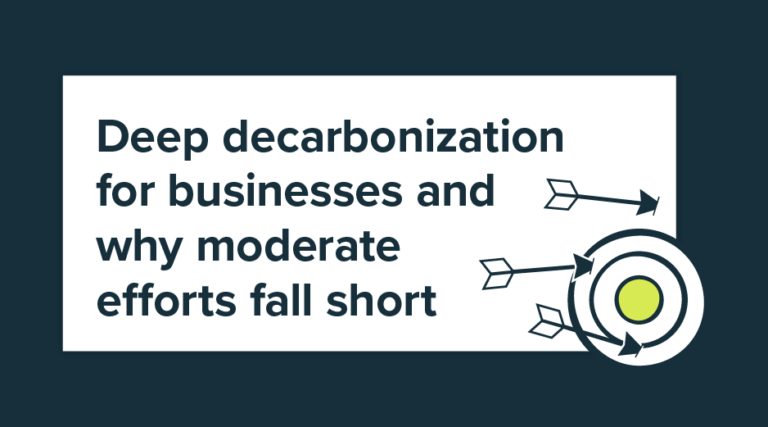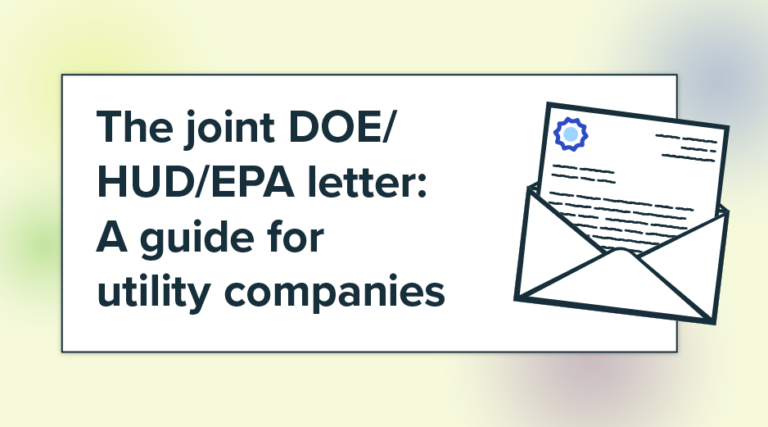Energy Management Questions
Whether you are starting out in energy management or consider yourself an expert in the field, energy management is a constantly evolving and developing discipline. Its principles and practices have been employed by businesses across multiple industries to bring down energy costs and kWh consumption, optimize operations, reduce waste, and very importantly, cut GHG in response to climate regulations.
Technology has enabled energy management professionals and teams to plan, execute, and evaluate energy management strategies through machine-learning, big data, and energy analytics as well as monitoring and controlling technologies. A quick google search of energy management related technologies, will have your screen flooded with acronyms such as EMS, EMIS, ERP, BMS, EnMS, BAS and more.
What do these acronyms mean? Where do these fit in the energy management technology landscape? How do you know which technology or solution is right for your business?
If you are asking yourself these questions, read on. The following sets out to explain these terms and their applications, whie also addressing some of the frequently asked questions (FAQ) about energy management.
1. What is an energy management system?
Energy management systems (EMS or EnMS) are commonly referred to computer-aided tools or software used to monitor, control, and optimize energy performance of domestic and commercial real estate; equipment; operations and manufacturing facilities in virtually any industry.
Energy management systems are often segmented on the basis of application, eg. utility energy management system (think SCADA), industrial energy management system, facility energy management system, building energy management system, residential energy management and so on.
While the functionality of each of these systems may vary, at its core, an energy management system is designed to assist energy professionals effectively manage and reduce the kWh and costs associated with their business and operations in an environmentally responsible and compliant manner.
It’s important to note that there is a distinct difference between energy management systems and energy management software–that being automated control of facility/building equipment, machinery and other systems such as HVAC, lighting and more–which is a feature commonly found in energy management systems. Energy management dashboards and platforms are data and analytical powerhouses that are key to:
- Analyzing consumption trends and anomalies;
- Measuring and verifying the impact of energy saving actions/projects;
- Identifying energy intensive equipment/areas, waste and improving operational efficiency;
- Reporting on the data required for energy compliance and certification; and much more.
While utility/industrial/facility energy management systems have the ability to monitor and automate control of building systems, they often lack the analytical capability to identify key energy savings opportunities.
2. What features should I be looking for in an energy management software?
Energy management software is the technology enabler providing data-driven insights through big data and analytics assisting facility managers, building energy managers, utilities, energy suppliers, energy service companies (ESCOs) and consultants to make informed decisions about energy and cost saving actions and strategies.
It brings together hardware, software, and data into one platform that allows energy management teams to remotely monitor, analyze energy, water, gas, and other business data from one central system.
The ability to analyze data through analytics, and develop actionable insights, is where the value lies. A good energy management software will have (but not limited to) the following tools, features or functionality:
- Monitor and track total consumption values, as well as sub-metered buildings, sites, facilities and industrial equipment eg. HVAC, lighting, compressors and so forth. (Energy review/audit – a key requirement of ISO 50001 energy management certification)
- Assist energy managers assess areas of operational waste, as well as opportunities for energy and cost savings
- Accept varied types of data–energy, gas, water, temperature, and other business data from meters, sensors, data loggers and other IoT devices (eg. like occupancy, number of booked rooms, produced units etc.)
- Track and monitor CO2/GHG emissions
- Upload of historical data
- Provide interval meter data, with accompanying graph representation and analytical capability
- Machine-learning technology to identify energy consumption trends, identify peak demand
- Monitor and benchmark energy KPIs
- Smart notifications to alerts energy management teams of unexpected patterns
- Define, track and report on energy saving actions
- Measurement, verification and evaluation of energy saving projects – create baseline energy measurements, import variable data, create energy savings model (regression analysis) and reporting
- Integrate with 3rd party systems and APIs eg. Salesforce, WattWatchers, Solaredge
- Ability to scale as a project grows
- Connect to multiple hardware devices
3. What is the difference between an energy management software and building management system (BMS)/building automation system (BAS)?
Perhaps the most significant difference between energy management software and building management systems/automation systems is automated control of building equipment such as heat pumps, lighting, HVAC as well as other electrical and mechanical equipment—a key feature of BMS/BAS systems. BMS systems can remotely turn ON/OFF, change settings of equipment meaning that they can send controlling signals to equipment. Energy management software does not include these controlling features.
While energy management software has the ability to be integrated with BMS/BAS systems, it is largely geared toward delivering the analysis tools to dig deeper into energy patterns, incorporate historical data to identify trends, compare data across different periods, evaluate areas of operational waste/savings, measure and verify saving actions—which are not part of the capabilities of BAS/BMS systems. BAS/BMS systems simply don’t have the analytical muscle to conduct in-depth insight needed for long-term energy efficiency improvements.
4. How do I begin saving energy energy in my building or site?
The first step to saving energy in a building or site is to perform a site survey to gain a better understanding of your:
- Project environment eg. network availability: Is local internet (LAN) available for data transfer?
- Project requirements eg. What do I want to monitor? Are there metering devices installed? Do I need sub-metering? What other data would be relevant to apply to the project that is unique to the building/site/facility eg. production, floor area size etc.
- Project goals and objectives of the monitoring and targeting project e.g. what are my energy savings goals? What are the outcomes to be achieved? How will these be measured?
It is critically important to establish the project environment, requirements, goals and objectives, before integrating software and analytics to accurately monitor and evaluate the impact of energy saving projects and actions.
5. What role does energy management software play in ISO 50001?
Energy management software is really the key ingredient when starting the process towards achieving the ISO 50001 standard. Without the advanced analytical capability that is at the core of energy management software, performing the calculations and generating the insights needed for reporting & compliance become near impossible.
Through advanced analytics software and tools, found in energy management software platforms and dashboards, users are able to:
- Conduct an energy review, identify energy intensive and costly appliances/equipment and sites and establish baseline energy consumption for energy savings projects
- Monitor and track Energy Performance Indicators EnPIs
- Measure and track progress towards energy targets
- Monitor, measure, analyse, evaluate, audit energy performance
- Take actions to address abnormal/deviant behavior or trends and continually improve energy performance and efficiency
- Prove efficiency of Energy Conservation Measure implemented using IPMVP methodology
- Build linear regression models
6. On-premise vs cloud-based energy management software – what’s the difference?
Energy management software can be segmented according to deployment –
- Cloud-based energy management software
- On-premise energy management solution (stand alone application, deployed locally)
Cloud-based energy management software is hosted and maintained by the service provider eg. EnergyCAP energy and sustainability software is hosted on AWS and the platform/user interface is accessed by users through a web browser. On-premise energy management software on the other hand, is installed locally in a premises’ servers and computers and can work without the internet connection.
Cloud-based and on-premise energy management software can also differ on the basis of pricing, security, customization, maintenance, lifecycle.
Pricing – On premise energy management software traditionally has a once off cost/licensed to buyers, whereas cloud based energy management software works on a subscription basis, whereby users pay a monthly subscription for the use of the software. Furthermore, on-premise solutions often incur additional costs, in set-up and installation and where additional hardware may be required. Conversely, cloud-based solutions can be set up and accessed by users in a matter of minutes—no upfront costs or installation teams required. In order to deploy a system with advanced analytics capabilities like Wattics, you’d need servers and IT environment costing ~$10 000—50 000 depending on the size of the project.
Security – Security is an important consideration when considering a software solution that house sensitive data. It is crucial to ensure that when comparing solutions, that vendor security policies and procedures be taken into account? Do they comply with GDPR? Providers of cloud-based energy management software is taken care of by the vendor, while security of on-premise energy management software falls on the users themselves. Companies opting for on-premise solutions should consider whether they have the in-house expertise to maintain the highest security standards to avoid breaches. With Wattics’ integration method, the energy management platform does not intervene with the local network which prevents creating a weak chain and network therefore, stays closed and secure.
Customization – While on premise software solutions excel in customization, highly customized solutions come with the risk of being difficult to scale, update and maintain. While cloud-based solutions don’t offer much opportunity for customization, vendors offering these solutions are constantly working to develop new tools and features to meet customers requirements as their energy management needs evolve. New tools and features are made readily available to use and are updated by the service provider without user action required.
Maintenance – Maintenance is also a key consideration – cloud-based solution providers are responsible for the consistent maintenance, security and software updates of their software platform, while these responsibilities are those of the users when employing a on-premise energy management software. Extra support, time and costs may be incurred if the in house skills are lacking to oversee maintenance activities.
Cloud-based energy management software solutions will continue to grow over next years as these technologies continue to help energy professionals saving energy and adhere to energy conservation and efficiency mandates as well as support bottom-line profits.
If you are starting a new energy management project, looking for an energy management software to manage energy and certification projects, and/or looking to reduce kWh consumption, costs and improve overall efficiency in your company or organization, EnergyCAP Smart Analytics has you covered!
To learn more about how EnergyCAP Smart Analytics can help your business or help you manage energy projects on behalf of your customers, send us a request using the contact form below – and let’s start the conversation!
 Best-in-class portfolio-level energy and utility bill data management and reporting.
Best-in-class portfolio-level energy and utility bill data management and reporting.
 Real-time energy and sustainability analytics for high-performance, net-zero buildings.
Real-time energy and sustainability analytics for high-performance, net-zero buildings.
 A holistic view of financial-grade scope 1, 2, and 3 carbon emissions data across your entire business.
A holistic view of financial-grade scope 1, 2, and 3 carbon emissions data across your entire business.
 Energy and sustainability benchmarking compliance software designed for utilities.
Energy and sustainability benchmarking compliance software designed for utilities.


